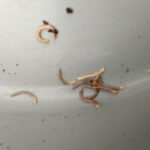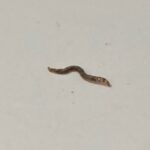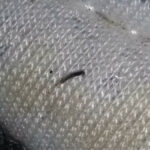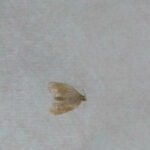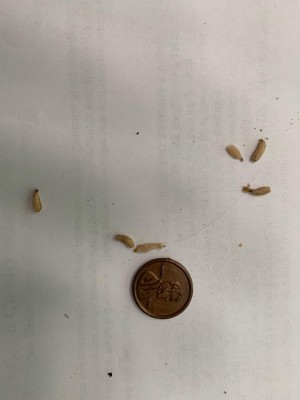Much like plants and flowers, pests are also seasonal. During the warm summer season, you might notice swarms of gnats flying around outdoors and towards the end of the summer or early fall, you may notice an increase in the number of centipedes crawling around on your kitchen floor. There are a number of house pests that can invade your home seasonally or even year round. One such house pest is the silverfish.
The silverfish (Lepisma saccharina L.) is also called the urban silverfish or the fishmoth. In its adult stage, the silverfish can measure anywhere from a half inch up to an inch. Its body is small and it has no wings. The silverfish is also silver-blue in color and up close, it has the appearance and shape of a fish, hence the name silverfish. Although the silverfish is silver-blue in color, during its first few molting phases it may be dark brown in color. The silver-blue scales do not develop on the silverfish until after its third molt. Silverfish may undergo many molts throughout its lifetime and it actually continues to molt even after reproduction occurs. The silverfish is one of the few insects that continue to molt after mating.
Silverfish are nocturnal insects and they can be found outside or inside the home. Outside, silverfish can be found in ant and termite nests, under rocks, in bark and leaf molds, and in nests. When found in the home, they are typically hunting for food and moisture. While they can be found anywhere in the home, silverfish are commonly found in the bathtub, washbasin or sink. They tend to crawl into these spaces in search of moisture only to get trapped inside as they are unable to climb out.
Silverfish prefer to eat vegetables with a high protein and carbohydrate content, but they will eat just about anything. This makes them even more of a pest to homeowners because they will eat through fabrics such as rayon, silk, cotton, and linen as well as breakfast cereal, flour, paper, wallpaper, glue, gum, photographs, starch, sugar, molds, and dried meats.
Silverfish can cause a significant amount of damage to food, clothes, and household materials, but they are harmless to humans. This means that they do not intend to bite humans. The can nip and curl up if handled, but their nips are not strong enough to break human skin. Individuals with allergies may develop a rash, but this is uncommon.
There are several ways to get rid of silverfish. Sanitizing your home along with the use of aerosol insecticides will help control silverfish. It’s best to remove anything that may be considered a hiding place for silverfish to lay their eggs such as piles of old papers, clothes, books, and boxes. Once you have removed these hiding places, say to space in the basement, simply add moth crystals to the boxes to prevent re-infestation. If the infestation is severe, call an exterminator. An exterminator will drill holes in the walls and administer chemicals to kill existing silverfish and prevent eggs from hatching. Silverfish get into the home through cracks and crevices, to extermination an extremely effective method.
Silverfish also have natural predators such as earwigs and house centipedes. It’s up to you if you would like to keep these pests around to control the silverfish population in your home.
All About Worms is always free, always reader-supported. Your tips via CashApp, Venmo, or Paypal are appreciated! Receipts will come from ISIPP Publishing.



